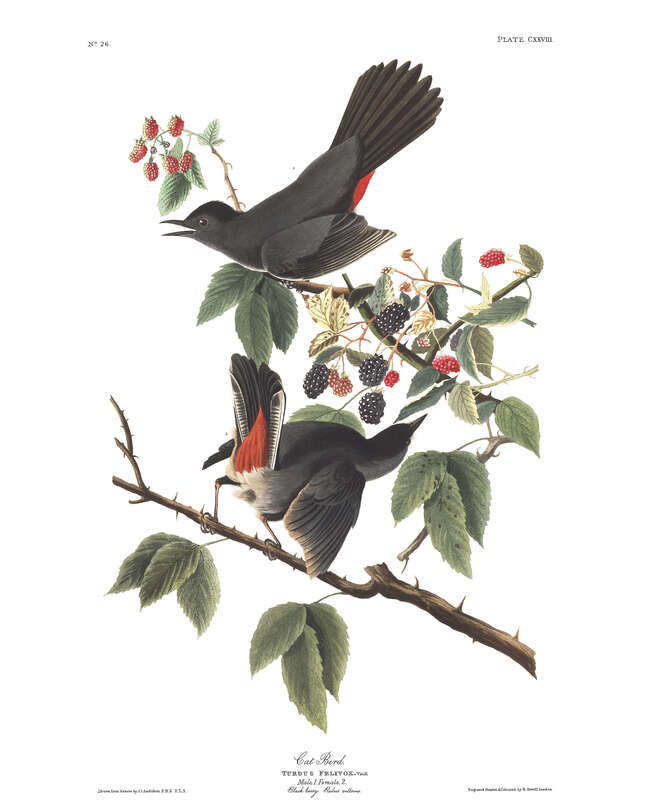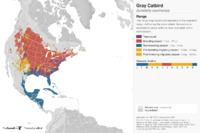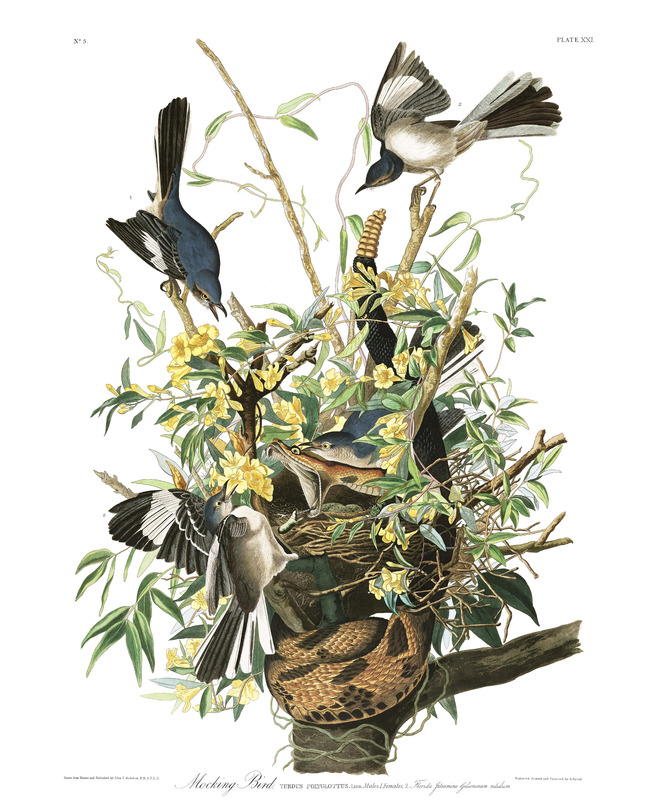Mockingbirds and Thrashers
Birds in the Mimidae family are characterized by their long legs, short, rounded wings, and long tails. They are best known for their vocalizations, and some are able to mimic sounds like other bird calls, cars, and more. They have small to medium beaks and are typically gray or brown. These birds forage on the ground for seeds, insects, nuts, and berries. All 35 species in this family are found in North and South America.
Included below are the Gray Catbird and the Northern Mockingbird.
Gray Catbird
Dumetella carolinensis
Habitat: Undergrowth, brush, thorn scrub, suburban gardens. Favors leafy thickets on the edges of forests and streams, swampy areas, overgrown fields, and gardens with hedges.
Preferred Food: Mostly insects and berries. Rarely catches small fish. At feeders, will eat a bizarre assortment of items including doughnuts, cheese, boiled potato, and corn flakes.
Fun Fact: As the name suggests, Gray Catbirds have a call that sounds like a cat mewing.
Northern Mockingbird
Mimus polyglottos
Habitat: Towns, farms, roadsides, thickets, brushy areas.
Preferred Food: Mostly insects and berries. Fall and winter diet leans heavily to berries and wild fruits, sometimes a few cultivated fruits.
Fun Fact: In addition to other birds, mockingbirds are known to mimic music, machinery, toads, and frogs, amongst other things.



